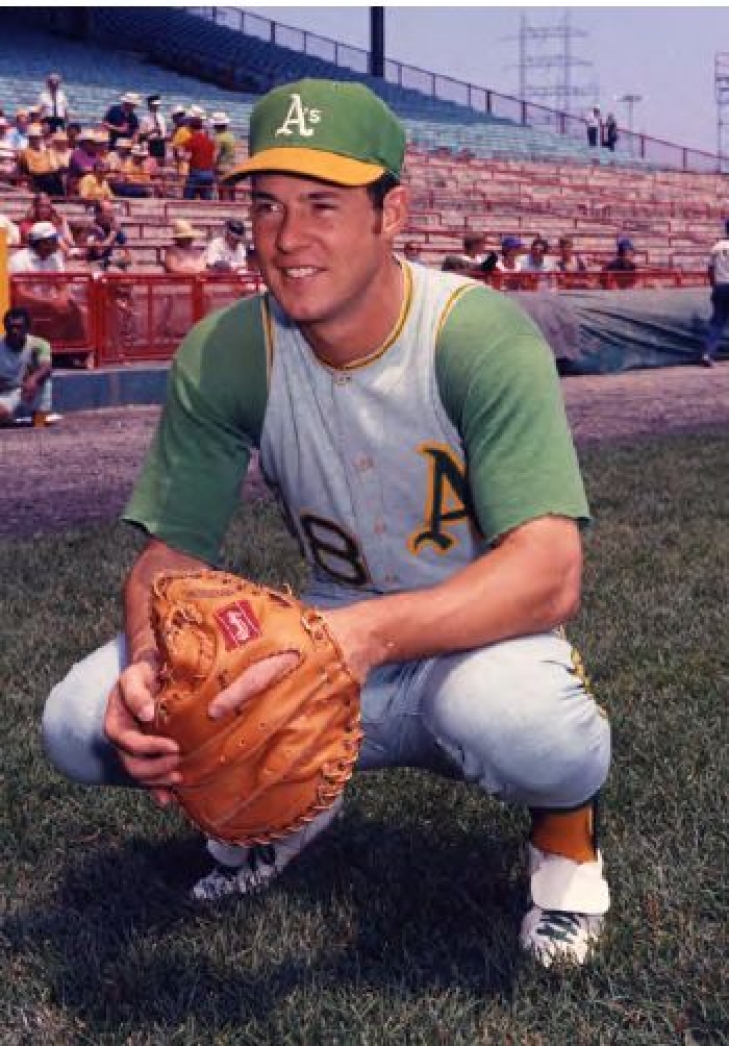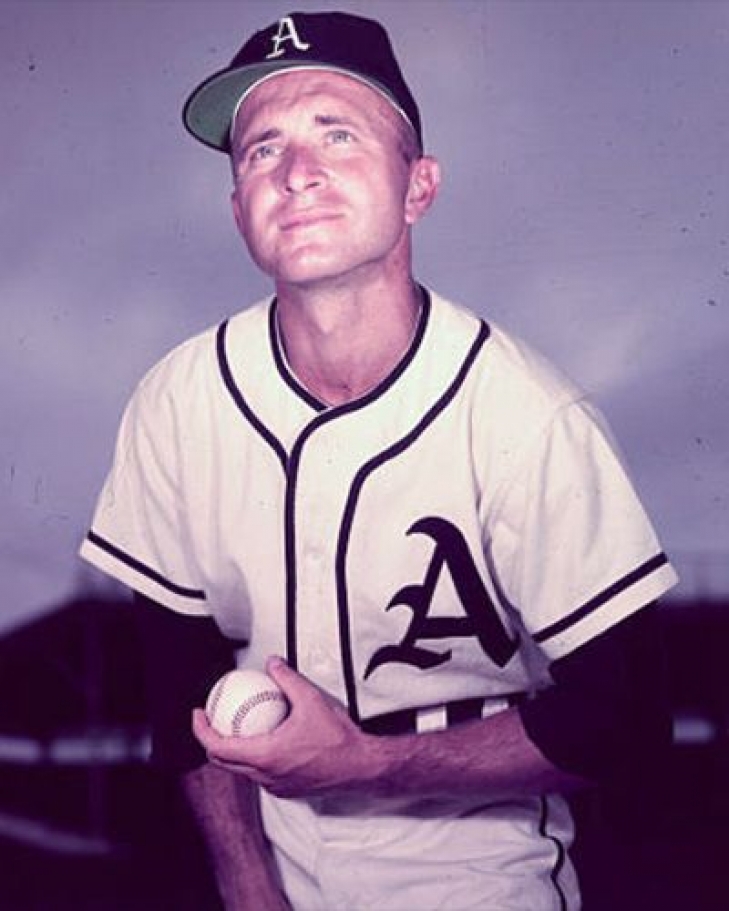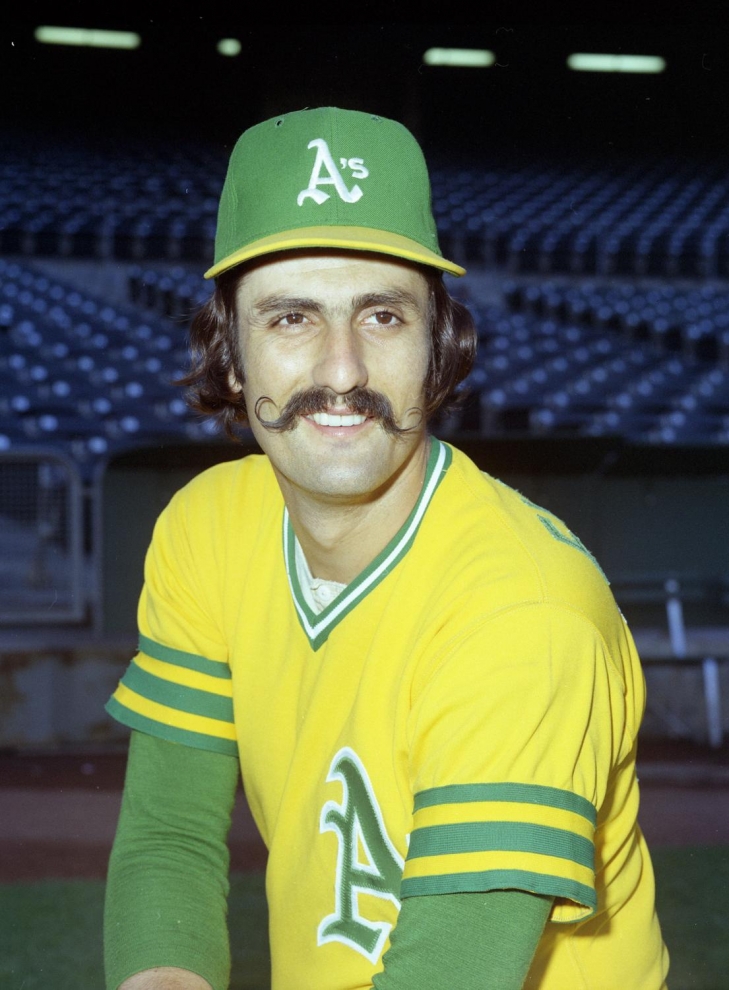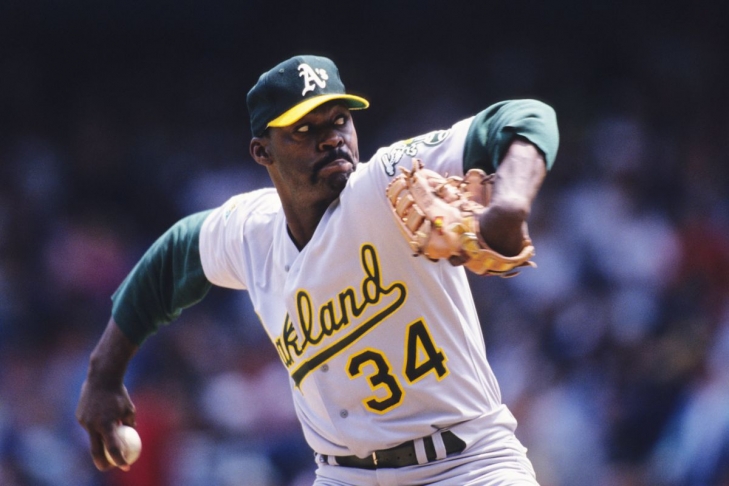45. Bing Miller
An old rookie at 26 with the Washington Senators, Connie Mack's Philadelphia Athletics would trade for him, and from 1922 to 1925, he had three .300 seasons, and in the one year he didn't hit that mark, he batted .299. He was deemed expendable and was dealt with the St. Louis Browns in 1926, but was back in 1928.
40. Gene Tenace
Gene Tenace was the Catcher during Oakland’s mini-dynasty in the early 70s, and a lot of his value did not show up on a traditional stat sheet.
A Second Round Pick in 1965, Tenace would debut for the Athletics in 1969 and performed in a backup role until 1972. He earned more playing time in the 1972 Playoffs and would bat .348 in the World Series with 4 Home Runs and 9 RBIs. He was named the World Series MVP in the Athletics' first World Series win on the West Coast.
50. George Earnshaw
It took a long time for George Earnshaw to make the Majors, but once the 6’ 4” did, he wasted little time proving that he belonged.
39. Terry Steinbach
The first 11 seasons of Terry Steinbach’s career were with the Oakland A’s and the converted Catcher (he played Third initially in the Minors) would do well in the Majors in his new role.
41. Stuffy McInnis
John Phalen “Stuffy” McInnis was signed by the Philadelphia Athletics before the 1909 season, and he would play off the bench, usually at Shortstop for his first two seasons. McInnis would take over at First Base in 1911, and became the youngest member of Connie Mack’s “$100,000 Infield”.
37. Eddie Joost
In 1946, most of the majors had given up on Eddie Joost, who had issues with Braves Management and was assigned to AAA when he joined the St. Louis Cardinals organization. Joost was 31, and it could easily be believed that his best seasons were behind him. As it would turn out, that was not the case at all.
47. Bobby Shantz
Bobby Shantz was overlooked by a lot of scouts as they considered him too small (5’ 6”) but the Philadelphia Athletics would sign him in 1948, and after a couple of mediocre years, he would have a two-year run as one of the best starting pitchers in the game.
36. Elmer Valo
Born in Slovakia, Elmer Valo immigrated to the United States as a child and would live the American Dream to become a Major League Baseball Player. Valo would debut with the Philadelphia Athletics in 1940, and as history would tell us was one of the most intense players to don the uniform of the Athletics.
33. Carney Lansford
Carney Lansford joined Oakland in 1983 two years removed after winning the Batting Title with the Boston Red Sox.
Lansford would not win a Batting Title as an Athletic, but he batted .300 in his first two years in Oakland and would do so again in 1989. Lansford played good defense at Third Base, and he had a beautiful blend of power and speed, showcasing five seasons of at least 10 Home Runs, peaking at 19 in both 1986 and 1987. He would also have five straight 16 or more Stolen Base seasons (1986-90) with Oakland, which was surprising considering he went the four years prior without reaching the double-digit mark.
35. Jimmy Dykes
Arriving in the Philadelphia Athletics organization via the Rule 5 Draft for the 1918 season, Jimmy Dykes was an excellent fielder, who was believed to have limited hitting ability. That was the case in his first two seasons, where he batted below .200 but this would change as he matured into the role of an everyday starter in Major League Baseball.
32. Rollie Fingers
While the role of the relief pitcher was nothing new by the late 60s, but when Rollie Fingers emerged as Oakland’s closer, he was one of the first of his kind to be considered a superstar. Fingers was a starter through most of his minor league career, and when he debuted with Oakland in 1968, he was moved mostly to the bullpen. By 1971, this was his official role, and it was one that he was born to play.
22. Danny Murphy
There were a lot of great players that the Philadelphia Athletics in the 1900s and early 1910s, and this is likely why Danny Murphy has not received some of the due that he should have.
31. Topsy Hartsel
After a breakout season with the Chicago Orphans in 1901 where he batted .335 with 187 Hits, Tully “Topsy” Hartsel, bolted from the National League to the American League and Connie Mack’s Philadelphia Athletics.
30. Dwayne Murphy
An Oakland Athletic for the first 10 of his 12 seasons in the Majors, Dwayne Murphy was known for his defensive ability and home run capability.
48. Ferris Fain
Ferris Fain was plucked in the Rule 5 Draft after the 1946 Season, and he was inserted as the starting First Baseman the year after. Fain immediately showed extraordinary plate discipline as he had a ,414 OBP as a rookie. Fain played his first six seasons in the Majors with the Philadelphia Athletics, and he never had an OBP less than .412, and he was always in the top seven in that category. Fain would be named an All-Star in 1950, and would be again in 1951 and 1952, with the latter year seeing him win the OBP Title with .438.
34. Joe Rudi
An honored member of the three straight World Series Championships in the first half of the 1970s, Joe Rudi, was not just there, as the prime of his career occurred during this Oakland dynasty.
38. Socks Seybold
When you think of home run champions, Ralph Orlando “Socks” Seybold doesn’t come to mind, but there are a lot of anomalies in this man’s career.
29. Dave Stewart
Most fans in Oakland likely didn't notice when they signed Dave Stewart in May of 1986, as he was cast off from Philadelphia, who had released him earlier. It didn't take them long to notice him after. Adding a forkball to his repertoire, Stewart finished the season 9-5, and he would then embark on a four-year run where he was the workhorse of the American League.
24. Max Bishop
Max Bishop was one of the better defensive players of his day and had there been a Gold Glove award in his day, and there is a good chance that he would have nabbed a few.
27. Barry Zito
Barry Zito was with the Oakland A's for the first seven seasons of his career, and for a time, he was one of the elite hurlers of the American League. Zito debuted in 2000 and was a 17-game winner in 2001. The curveball specialist's best year came right after when he had a league-leading 23 Wins (against only five losses) had 182 Strikeouts with a 2.75 Earned Run Average. He would win the Cy Young Award that year.





















